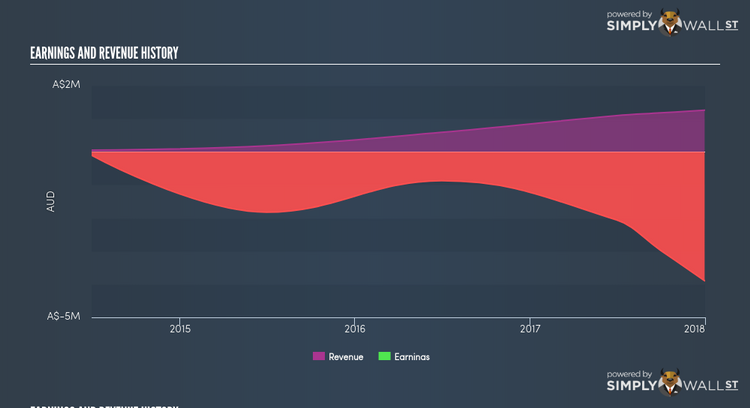Is Tinybeans Group Limited (ASX:TNY) Excessively Paying Its CEO?

Eddie Geller took the reins as CEO of Tinybeans Group Limited’s (ASX:TNY) and grew market cap to AU$19.09M recently. Understanding how CEOs are incentivised to run and grow their company is an important aspect of investing in a stock. This is because, if incentives are aligned, more value is created for shareholders which directly impacts your returns as an investor. I will break down Geller’s pay and compare this to the company’s performance over the same period, as well as measure it against other Australian CEOs leading companies of similar size and profitability. Check out our latest analysis for Tinybeans Group
What has TNY’s performance been like?
TNY can create value to shareholders by increasing its profitability, which in turn is reflected into the share price and the investor’s ability to sell their shares at higher capital gains. Over the last year TNY produced negative earnings of -AU$3.89M , which is a further decline from prior year’s loss of -AU$1.47M. Furthermore, on average, TNY has been loss-making in the past, with a 5-year average EPS of -AU$0.10. During times of negative earnings, the company may be incurring a period of reinvestment and growth, or it can be a sign of some headwind. In any case, CEO compensation should be reflective of the current condition of the business. In the latest financial report, Geller’s total compensation rose by 34.04% to AU$369.36K. Although I couldn’t find information on the composition of Geller’s pay, if some portion were non-cash items such as stocks and options, then fluctuations in TNY’s share price can affect the actual level of what the CEO actually takes home at the end of the day.
Is TNY’s CEO overpaid relative to the market?
Despite the fact that there is no cookie-cutter approach, as remuneration should account for specific factors of the company and market, we can fashion a high-level thresold to see if TNY deviates substantially from its peers. This exercise helps investors ask the right question about Geller’s incentive alignment. On average, an Australian small-cap has a value of $140M, produces earnings of $10M, and pays its CEO at roughly $500,000 per annum. Normally I’d use market cap and profit as factors determining performance, however, TNY’s negative earnings reduces the effectiveness of this method. Analyzing the range of remuneration for small-cap executives, it seems like Geller is paid aptly compared to those in similar-sized companies. On the whole, even though TNY is loss-making, it seems like the CEO’s pay is reflective of the appropriate level.
Next Steps:
My conclusion is that Geller is not being overpaid. But your role as a shareholder should not end here. As above, this is a relatively simplistic calculation using high-level benchmarket. Proactive shareholders should question their representatives (i.e. the board of directors) how they think about the CEO’s incentive alignment with shareholders and how they balance this with retention and reward. If you have not done so already, I highly recommend you to complete your research by taking a look at the following:
Governance: To find out more about TNY’s governance, look through our infographic report of the company’s board and management.
Financial Health: Does it have a healthy balance sheet? Take a look at our free balance sheet analysis with six simple checks on key factors like leverage and risk.
Other High-Growth Alternatives: Are there other high-growth stocks you could be holding instead of TNY? Explore our interactive list of stocks with large growth potential to get an idea of what else is out there you may be missing!
To help readers see pass the short term volatility of the financial market, we aim to bring you a long-term focused research analysis purely driven by fundamental data. Note that our analysis does not factor in the latest price sensitive company announcements.
The author is an independent contributor and at the time of publication had no position in the stocks mentioned.

